#southeastern africa
Text

Square-lipped rhinoceros standing close up, Southeastern Africa, ca. 1958-1988
Garst, Warren, 1922-2016, photographer
CSU - Garst (Warren and Genevieve) Collection
Mountain Scholar, Digital Collections of Colorado
#rhinoceros#square-lipped rhinoceros#southeastern africa#mountain scholar#digital collections of colorado#warren and genevieve garst#colorado state university
2 notes
·
View notes
Text
on a lighter note while i was waiting like 20 minutes in line for an appointment that didn't happen i was thinking about writing my malynera geography analysis post so there's that
#i was thinking about how if malynera is six hours away from london#theres a possibility it could be located closer to the western coast of africa (think são tomé and príncipe)#but subsaarian african countries like angola and são tomé have more amazonian bioms (plains and dense forests)#while malynera is extremely mountainous and closer to southeastern china and southeast brazil than anything#look up zhangjiajie mountains and mares de morros to get an idea of what i mean lol#maya mineo just likely based it off the biom in japan (which im unfamiliar with but its prob close to both of those)#which im thankful for considering the implications#also i cant wait to open that post with 'malynera is an absolust monarchy'
3 notes
·
View notes
Text
There was this post a while ago where somebody was saying that Cheetahs aren't well suited to Africa and would do well in Midwestern North America, and it reminded me of Paul S. Martin, the guy I'm always pissed off about.
He had some good ideas, but he is most importantly responsible for the overkill hypothesis (idea that humans caused the end-Pleistocene extinctions and that climate was minimally a factor) which led to the idea of Pleistocene rewilding.
...Basically this guy thought we should introduce lions, cheetahs, camels, and other animals to North America to "rewild" the landscape to what it was like pre-human habitation, and was a major advocate for re-creating mammoths.
Why am I pissed off about him? Well he denied that there were humans in North America prior to the Clovis culture, which it's pretty well established now that there were pre-Clovis inhabitants, and in general promoted the idea that the earliest inhabitants of North America exterminated the ecosystem through destructive and greedy practices...
...which has become "common knowledge" and used as evidence for anyone who wants to argue that Native Americans are "Not So Innocent, Actually" and the mass slaughter and ecosystem devastation caused by colonialism was just what humans naturally do when encountering a new environment, instead of a genocidal campaign to destroy pre-existing ways of life and brutally exploit the resources of the land.
It basically gives the impression that the exploitative and destructive relationship to land is "human nature" and normal, which erases every culture that defies this characterization, and also erases the way indigenous people are important to ecosystems, and promotes the idea of "empty" human-less ecosystems as the natural "wild" state.
And also Martin viewed the Americas' fauna as essentially impoverished, broken and incomplete, compared with Africa which has much more species of large mammals, which is glossing over the uniqueness of North American ecosystems and the uniqueness of each species, such as how important keystone species like bison and wolves are.
It's also ignoring the taxa and biomes that ARE extraordinarily diverse in North America, for example the Appalachian Mountains are one of the most biodiverse temperate forests on Earth, the Southeastern United States has the Earth's most biodiverse freshwater ecosystems, and both of these areas are also a major global hotspot for amphibian biodiversity and lichen biodiversity. Large mammals aren't automatically the most important. With South America, well...the Amazon Rainforest, the Brazilian Cerrado and the Pantanal wetlands are basically THE biodiversity hotspot of EVERYTHING excepting large mammals.
It's not HIM I have a problem with per se. It's the way his ideas have become so widely distributed in pop culture and given people a muddled and warped idea of ecology.
If people think North America was essentially a broken ecosystem missing tons of key animals 500 years ago, they won't recognize how harmful colonization was to the ecosystem or the importance of fixing the harm. Who cares if bison are a keystone species, North America won't be "fixed" until we bring back camels and cheetahs...right?
And by the way, there never were "cheetahs" in North America, Miracinonyx was a different genus and was more similar to cougars than cheetahs, and didn't have the hunting strategy of cheetahs, so putting African cheetahs in North America wouldn't "rewild" anything.
Also people think its a good idea to bring back mammoths, which is...no. First of all, it wouldn't be "bringing back mammoths," it would be genetically engineering extant elephants to express some mammoth genes that code for key traits, and second of all, the ecosystem that contained them doesn't exist anymore, and ultimately it would be really cruel to do this with an intelligent, social animal. The technology that would be used for this is much better used to "bring back" genetic diversity that has been lost from extant critically endangered species.
I think mustangs should get to stay in North America, they're already here and they are very culturally important to indigenous groups. And I think it's pretty rad that Scimitar-horned Oryx were brought back in their native habitat only because there was a population of them in Texas. But we desperately, DESPERATELY need to re-wild bison, wolves, elk, and cougars across most of their former range before we can think about introducing camels.
2K notes
·
View notes
Text
"The report, titled My Body is My Own (PDF), looked at both women’s power to make their own decisions about their bodies and the extent to which countries’ laws support or interfered with that right.
In the 57 developing countries where data was available, the report found 45 percent of women were not fully empowered to make choices over healthcare, contraception, and whether or not to have sex. There were differences across regions: While 76 percent of women in eastern and southeastern Asian make their own decisions over their bodies, the figure is less than 50 percent in sub-Saharan Africa and in central and south Asia.
In some countries – Mali, Niger and Senegal – more than 90 percent of women are deprived of their bodily autonomy, the report said."
842 notes
·
View notes
Text
Thinking about how much of a full circle moment the Blue Marble photograph was/is.

This image was taken in 1972 by the crew of Apollo 17 on their way to the Moon - the last humans to ever visit Luna, to date.
And it just so happens that the approximate center of the image is the southeastern region of Africa, under bright noonday sun.
And it just so happens that the southeastern region of Africa, from the Cape to the Horn, is where our most ancient prehuman ancestors, the australopithecines, originally evolved.
Dinkʼinesh ("Lucy"), the holotype of Australopithecus and the genesis of our modern understanding of our species' origins, was not discovered until two years after this photo was taken. In this image, the bones of our most treasured ancestor still lie beneath the earth of Qadaqar, Ethiopia.
This is not just an image of our home planet. This is an image of our cradle. This is where the humanity was born, four million years ago.
What a marvelous coincidence, no?
#spy has thoughts#i'm not crying you're crying#my deep and abiding love of humanity knows no bounds#spy's smash hits#science#space#paleoanthropology#anthropology
701 notes
·
View notes
Photo
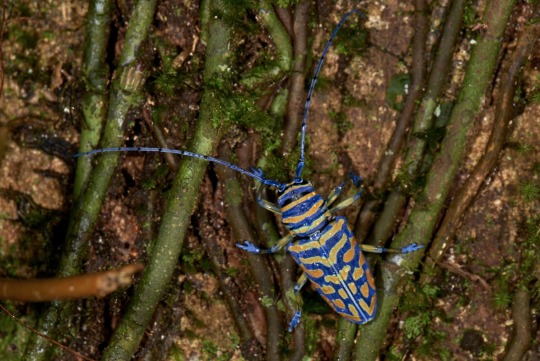


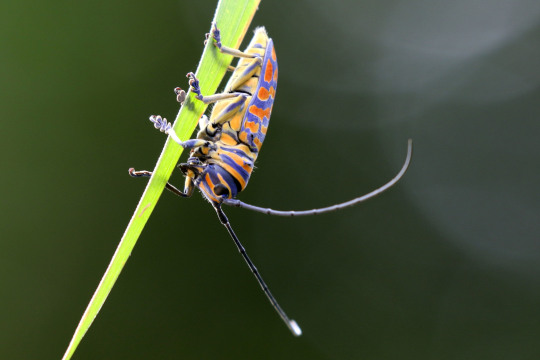
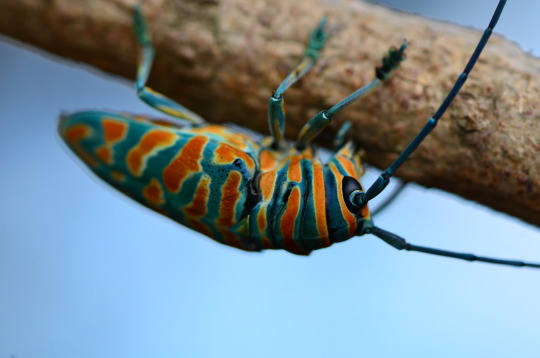


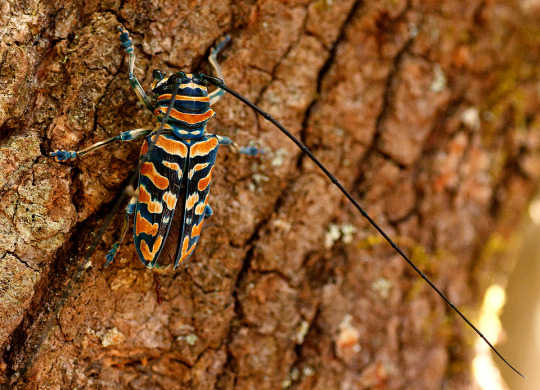


Jewel longhorn beetle, Sternotomis bohemani, Cerambycidae
Found primarily in the southeastern region of Africa
Photo 1-2 by michelemenegon, 3 by ottob-c, 4 by martingrimm, 5-6 by m_d, 7-8 by bartwursten, 9 by joachim, and 10 by zarek
2K notes
·
View notes
Text
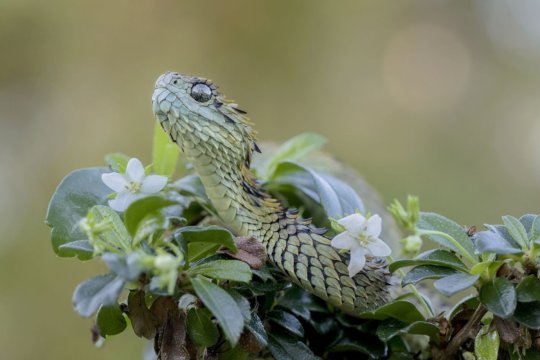


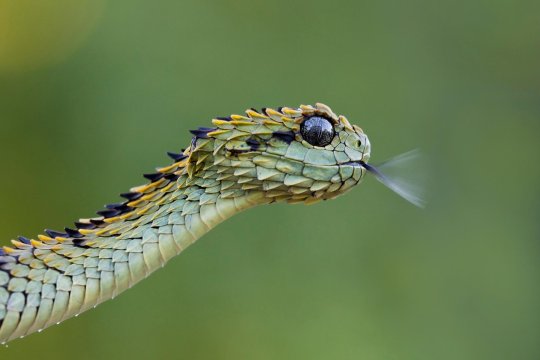
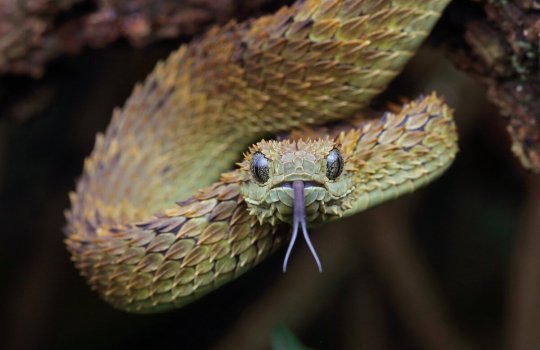


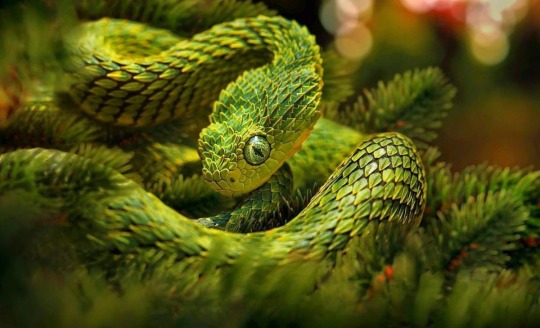
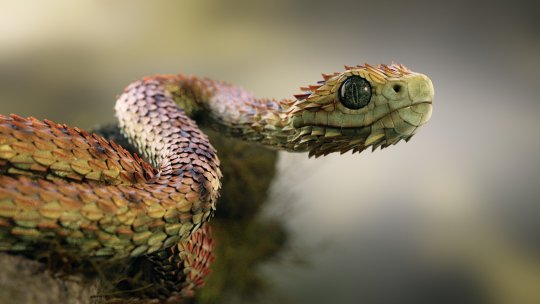

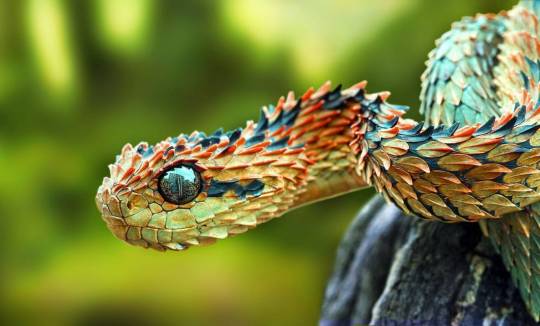



Колючая кустарниковая гадюка (Atheris) — род ядовитых змей, обитающий в тропических лесах Южной Африки в таких странах, как Конго, юго-восточной Уганде и западной Кении. Считается одной из самых красивых гадюк, благодаря впечатляющей изогнутой чешуе в форме колючек, имеющей яркий разноцветный окрас. Благодаря такому необычному строению чешуек, придающим змее щетинистый вид, она становится похожей на сказочных грозных драконов, поэтому сильно ценится среди владельцев искусственных террариумов. Ярко окрашенные колючие гадюки (желтые, красные или серые) редко встречаются в дикой природе.
Самцы колючей кустарниковой гадюки достигают в длину до 75 сантиметров, а самки — до 60 сантиметров. Колючая гадюка — живородящее пресмыкающееся, в среднем самка рожает до 12 детенышей за один раз, длина которых составляет около 15 сантиметров. Змея отлично лазит по кустарникам, небольшим деревьям и крупным цветам. Охотится, в основном, в ночное время на лягушек, ящериц, жуков и мелких млекопитающих. Человеку лучше избегать встреч с этой гадюкой, поскольку она относится к ядовитым змеям. Яд этой гадюки содержит нейротоксин с большой порцией цитотоксина. Поэтому, если колючая кустарниковая гадюка укусит человека, то его мышцы не только парализует, а приводит к сильному кровотечению внутренних органов.
The spiny bush viper (Atheris) is a genus of venomous snakes found in the tropical forests of South Africa in countries such as Congo, southeastern Uganda and western Kenya. Considered one of the most beautiful vipers, thanks to its impressive curved, spine-shaped scales, which have a bright multi-colored color. Thanks to this unusual structure of scales, which gives the snake a bristly appearance, it becomes similar to fairy-tale formidable dragons, and therefore is highly valued among owners of artificial terrariums. Brightly colored spiny vipers (yellow, red or gray) are rarely found in the wild.
Males of the spiny bush viper reach a length of up to 75 centimeters, and females - up to 60 centimeters. The spiny viper is a viviparous reptile; on average, a female gives birth to up to 12 young at a time, which are about 15 centimeters long. The snake is excellent at climbing bushes, small trees and large flowers.It hunts mainly at night on frogs, lizards, beetles and small mammals. It is better for a person to avoid encounters with this viper, since it is a poisonous snake. The venom of this viper contains a neurotoxin with a large portion of cytotoxin. Therefore, if a spiny bush viper bites a person, then his muscles will not only paralyze, but lead to severe bleeding of internal organs.
Источник:https://prajt.livejournal.com/468465.html, https://t.me/+fxNu20lM26MwYzhi, vk.com/wall-149472484_824944, //www.zoopicture.ru/atheris-hispida/,/bogatyr.club/6936-koljuchaja-kustarnikovaja-gadjuka.html, //kartinki.pics/pics/1748-koljuchaja-kustarnikovaja-gadjuka-art.html,//livt.net/info/2017/07/09/kolyuchaya-kustarnikovaya-gadyuka/, dzen.ru/a/XLu9R3Ii0ACzPYI-.
#nature#video#reptiles video#reptiles#herpetology#photo of snakes#snake#viper#spiny bush viper#plants#macro photo#природа#видео#герпетология#пресмыкающиеся#рептилии#змея#фото змей#Колючая кустарниковая гадюка#растения#макрофото
242 notes
·
View notes
Text





Black history is not all about slave trade
Slave trade is not just black history it’s just 10% of the history africa holds
This is a message to my black brothers and sisters in America
Today I will be talking about the Zulu tribe
The ancestors of the Zulu migrated from west Africa into southeastern Africa during the Bantu migrations from 2000 BC until the 15th century. The Zulu tribe expanded into a powerful kingdom, subdued surrounding groups, and settled in the region known as KwaZulu-Natal in present day South Africa. After enduring colonialism and overcoming apartheid, they have emerged as the dominant ethnic group in South Africa todayAccording to Zulu ancestral belief, the first Zulu patriarch was the son of a Nguni chief who lived in the Congo Basin of Central Africa. By the early 1800s, the Zulu had migrated to Natal, where they lived among other Nguni-speaking chiefdoms. There were ongoing power struggles among these chiefdoms.Around 1808, Chief Dingiswayo of the Nguni-speaking Mthethwa people led wars of conquest to end the power struggles among the chiefs in the communities surrounding his chiefdom.Chief Dingiswayo centralized power by organizing the military into age-based groups, rather than lineage-based regimens. This weakened kinship ties of the conquered communities. Chief Dingiswayo left the conquered chiefdoms relatively intact after they accepted his dominion.The Zulu developed into a distinct cultural group by the time they were conquered by Chief Dingiswayo and his Mthethwa people in the early 1800s. At that time, the Zulu were a small lineage numbering around 2,000 people led by Chief Senzangakhona.Shaka, the future founder of the Zulu Kingdom, was the illegitimate son of the Chief Senzangakhona. Shaka was drafted into the Mthethwa and became one of Chief Dingiswayo's bravest warriors. When Chief Senzangakhona died, Shaka seized the Zulu throne.Using Dingiswayo's military style of weakening kinship ties amongst warriors, Shaka controlled the Zulu community. After Dingiswayo's death, he killed the legitimate heir and installed a puppet as Chief of the Mthethwa.Before long, Shaka seized control over Mthethwa's regiments and assumed power of the newly formed Zulu Kingdom in 1818.

Shaka, Zulu King 1818 to 1828.
Zulu tribe facts include the following:
Shaka Day is celebrated in September by slaughtering cattle, wearing traditional clothing, and wielding traditional weapons. Dignitaries from other tribes and nations attend.
Traditionally a senior male is the head of the clan. Young men train from childhood to fight and defend the clan. Members of the clan have kinship ties based on blood or marriage.
To show respect, the Zulu do not refer to elders by their first name; they use "Baba" meaning father, and "Mama" meaning mother.
Patrilineal inheritance and polygamy are practiced in Zulu culture; having more than one wife is acceptable if one can afford it.
In Zulu culture, bride wealth must traditionally be paid in cattle. Most native groups in South Africa, including Nguni-speaking Xhosa, Ndebele, and Swazi pay bride wealth.
#life#animals#culture#black history#history#blm blacklivesmatter#heritage#africa#biden is obama's puppet#england
626 notes
·
View notes
Text
i learned what are the most mysterious places in the world
Marree Man – The fact that there is not a single witness to the creation of the Marree Man speaks to the absolute isolation of central South Australia. Somehow in 1998, one person or a group of people were able to create a 2.6-mile long line drawing of an aboriginal hunter, without being seen. In the midst of barren, arid land in South Australia, the Marree Man is the largest geoglyph and work of art in the world. Cut into the harsh landscape with lines over 115 feet wide and one foot deep, the towering Marree Man is easily visible from space. Thirteen years after the Marree Man was discovered during a flyover, little is known about its origin. Although we may never know the true origin of the Marree Man, it is certainly one of most intriguing modern day mysteries.

Chocolate Hills – Bohol Island in the Philippines during the dry season, you might notice what looks like thousands of chocolate kisses protruding from the terrain. These mysterious conical mounds are known as the Chocolate Hills. There are approximately 1,268 individual hills, their heights ranging from 100 to 160 feet, though the highest is almost 400 feet high. The hills, which are almost all symmetrical, consist of grass-covered limestone and turn brown during the dry season. Despite the abundance of hills, it is unclear how they were formed. There are multiple geological explanations ranging from oceanic volcano activity to limestone weathering. Numerous legends and tales also exist to explain the Chocolate Hills.

Giants Nest – In 1949 a geologist named Vadim Kolpakov discovered a large mound of limestone in the north of the Irkutsk region in southeastern Siberia. The cone is curiously shaped with a crater at the top and a small mound in the center. The mound is about 40 meters high and 100 meters across at the base. The smaller mound at the top is about 12 meters high. The crater was named Patomskiy, after a nearby river, but local residents call it “the Fiery Eagle’s Nest”. Since the discovery of the crater, there have been many theories as to what could have created it. For a long time it was believed to be a meteorite impact structure. Some linked it to the Tunguska meteorite, whose remains have never been discovered. But the crater does not resemble any other known meteorite site. Even now, the origin of the crater is not discovered.
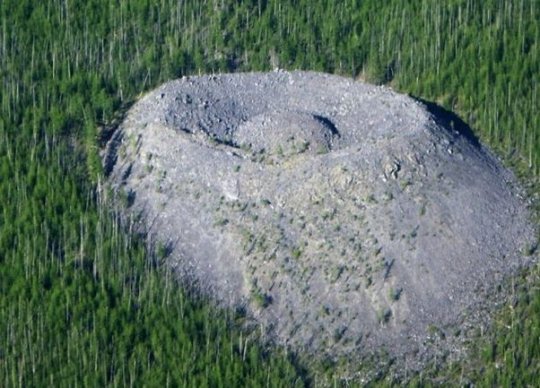
Richat Structure – In the midst of vast, vacant Sahara desert, just outside of Ouadane, Mauritania, lies a 30-mile wide geological oddity known the Richat Structure, sometimes called the “Eye of Africa.” From space, this natural curiosity forms a distinct and unmistakable bull’s-eye that once served as a geographical landmark for early astronauts as they passed over the Sahara. Once thought to be an impact crater due to its circularity, the unusual formation is now widely believed to have been caused by the erosion of a geological dome formed by pressure from a bulb of molten magma below.

Plain of Jars – The Plain of Jars is a collection of large stone jars interspersed throughout the Xieng Khouang plain in the Lao Highlands. The stone structures are mostly made of sedimentary rock and, ranging from 3 to 10 feet in height, each can weigh up to 14 tons. To date, the origin of the jars is unknown, though archaeologists believe that they were originally used between 1,500 and 2,000 years ago. Many researchers have theorized that the jars may have once served as funerals urns or food storage. As local Laotian legend would have it, the jars were created by Khun Cheung, an ancient king of giants who lived in the highlands. It is said that Cheung, after fighting a long and victorious battle, created the jars in order to brew huge amounts of celebratory lao lao rice wine.
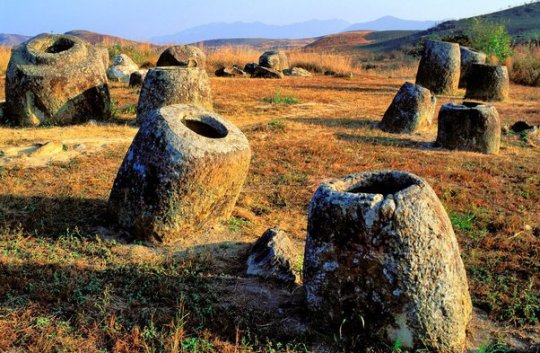
Giant’s Grave of Coddu Vecchiu – Giant’s or Tomba Dei giganti, are megalithic gallery graves that were used as public tombs during the Bronze Age. The massive gravestones were built by the Nuragic civilization, which existed in Sardinia from the 2nd millennium BCE. to the 2nd century CE. Despite the imaginative name, the sites were not the burial site of any giant; they were giant community burial chambers. Though we know the tombs had a funerary purpose, more questions remain. Little is known about the rituals or traditional beliefs that motivated their construction. Were they mass graves? Were they built to facilitate the journey into the afterlife? Since their existence has yet to be justified by scientific research, they have been credited to the supernatural, which has only increased their mystery. Legend also claims that yes, indeed, these were the tombs of powerful giants.
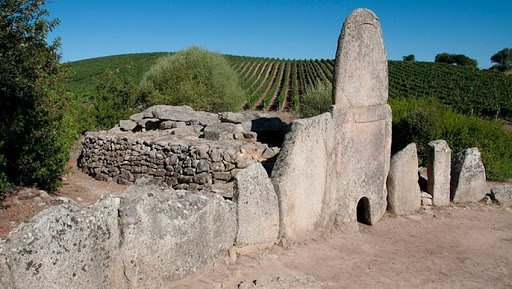
Zone of Silence – Pilot Francisco Sarabia was flying over a patch of desert land in Mexico when his instruments started to act increasingly odd. The man had to make an emergency landing in the middle of nowhere. Little did he know that this "nowhere" would be later dubbed "The Zone of Silence.” Weird radio silence isn't the only oddity of the creepy Zone. Like, what’s that weird trio that locals keep meeting in the Zone? They’re two men and a woman. Every time people see them, they’re wearing bizarre clothing that isn't suitable for a journey in the desert whatsoever. On top of all that, the Zone of Silence is known as a 50 km patch of deserted land where meteorites come crashing down on an eerily regular basis. On July 11, 1970, the US launched an ATHENA rocket from the Air Force base in Green River, Utah. The rocket was supposed to land somewhere in the area of White Sands in New Mexico. Instead, it went off course and, as if being pulled by some external force, crashed right in the heart of the Zone of Silence.
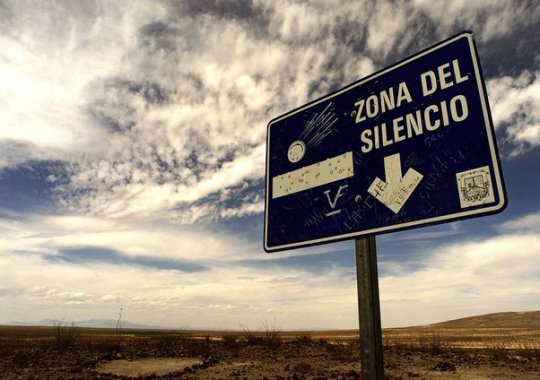
Michigan Triangle – Stretching from Ludington to Benton Harbor, Michigan and to Manitowoc, Wisconsin, the Lake Michigan Triangle has inspired numerous accounts of activity that are difficult to explain by rational thought. The mystery began in 1891, when a schooner named the Thomas Hume set off across the Lake to pick up lumber. Almost overnight in a torrent of wind, the Thomas Hume disappeared along with its crew of seven sailors. The wooden boat was never found. After the turn of the century, strange events happened at steady intervals. Of the more mysterious is the case of the Rosa Belle. In 1921 eleven people inside the ship, who were all members of the Benton Harbor House of David, disappeared and their ship was found overturned and floating in Lake Michigan. While it appeared that the ship had been damaged in a collision, no other ship had reported an accident and no other remains had been found.
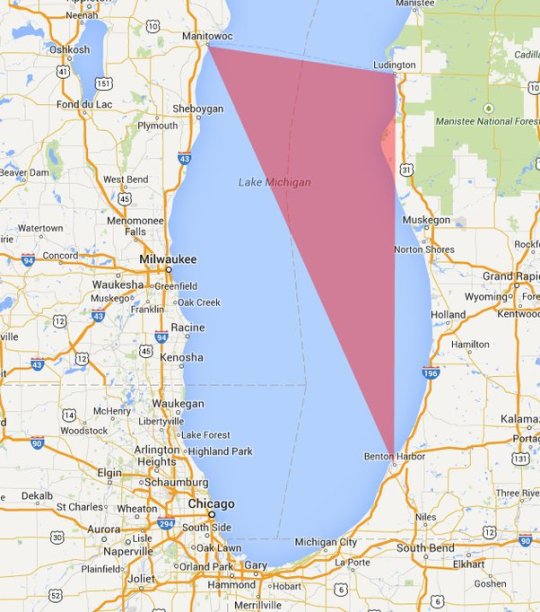
Alaska Triangle – The Alaska Triangle is a place in the untouched wilderness where mystery lingers and people go missing at a very high rate. The area began attracting public attention in October 1972, when a small, private plane carrying U.S. House Majority Leader Hale Boggs, Alaska Congressman Nick Begich seemingly vanished into thin air. For more than a month, 50 civilian planes and 40 military aircraft plus dozens of boats, covered a search area of 32,000 square miles, but no trace of the plane, the men, wreckage or debris were ever found. Afterward, more planes went down, hikers went missing, and Alaskan residents and tourists seemed to vanish into thin air. In fact, since 1988, more than 16,000 people have disappeared in the Alaska Triangle, with a missing person rate at more than twice the national average. These disappearances are blamed on everything from severe weather to aliens, to swirling energy vortexes, to an evil shape-shifting demon of Tlingit Indian lore called Kushtaka, with no scientific explanation to the disappearances till today.

The Initiation Well – The Initiation well is 88 feet deep well located on the land of Quinta da Regaleira. Actually, it was used for ceremonial purposes. There is another small well near this well. Both these wells are connected by tunnels. The larger well contains a 27-meter spiral staircase with several small landings and the smaller well contains straight stairs that connect a series of ring-shaped floors to one another. The smaller well is also called the 'Unfinished Well'. The depth of this larger well is equal to the four-storey building, which becomes narrower on going closer to the ground. It is believed that there is some kind of light comes out from the well inside the ground and comes outwards. Surprisingly, there is no system of light inside this well, then where from this light comes, it is the secret. Anyone who comes to visit here, always raises the question of where the light comes from inside the well? Till today this secret is unsolved.
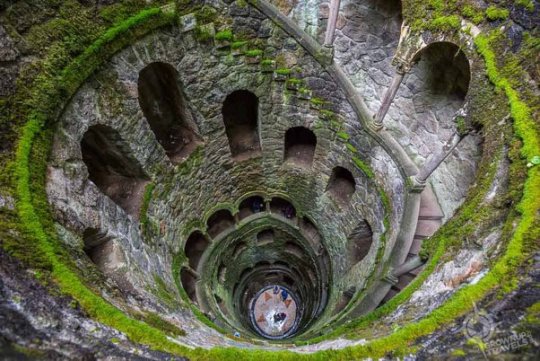
(Image Source : Google)
Thanks for Reading.
692 notes
·
View notes
Text
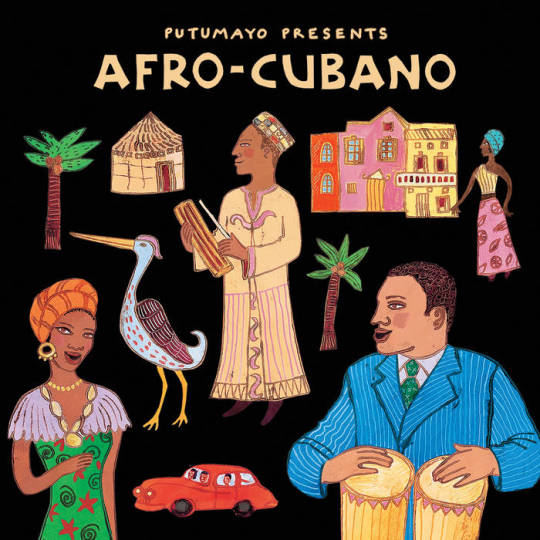
Music of African heritage in Cuba derives from the musical traditions of the many ethnic groups from different parts of West and Central Africa that were brought to Cuba as slaves between the 16th and 19th centuries. Members of some of these groups formed their own ethnic associations or cabildos, in which cultural traditions were conserved, including musical ones. Music of African heritage, along with considerable Iberian (Spanish) musical elements, forms the fulcrum of Cuban music.
Much of this music is associated with traditional African religion – Lucumi, Palo, and others – and preserves the languages formerly used in the African homelands. The music is passed on by oral tradition and is often performed in private gatherings difficult for outsiders to access. Lacking melodic instruments, the music instead features polyrhythmic percussion, voice (call-and-response), and dance. As with other musically renowned New World nations such as the United States, Brazil and Jamaica, Cuban music represents a profound African musical heritage.

Clearly, the origin of African groups in Cuba is due to the island's long history of slavery. Compared to the USA, slavery started in Cuba much earlier and continued for decades afterwards. Cuba was the last country in the Americas to abolish the importation of slaves, and the second last to free the slaves. In 1807 the British Parliament outlawed slavery, and from then on the British Navy acted to intercept Portuguese and Spanish slave ships. By 1860 the trade with Cuba was almost extinguished; the last slave ship to Cuba was in 1873. The abolition of slavery was announced by the Spanish Crown in 1880, and put into effect in 1886. Two years later, Brazil abolished slavery.
Although the exact number of slaves from each African culture will never be known, most came from one of these groups, which are listed in rough order of their cultural impact in Cuba:
The Congolese from the Congo Basin and SW Africa. Many ethnic groups were involved, all called Congos in Cuba. Their religion is called Palo. Probably the most numerous group, with a huge influence on Cuban music.
The Oyó or Yoruba from modern Nigeria, known in Cuba as Lucumí. Their religion is known as Regla de Ocha (roughly, 'the way of the spirits') and its syncretic version is known as Santería. Culturally of great significance.
The Kalabars from the Southeastern part of Nigeria and also in some part of Cameroon, whom were taken from the Bight of Biafra. These sub Igbo and Ijaw groups are known in Cuba as Carabali,and their religious organization as Abakuá. The street name for them in Cuba was Ñáñigos.
The Dahomey, from Benin. They were the Fon, known as Arará in Cuba. The Dahomeys were a powerful group who practised human sacrifice and slavery long before Europeans arrived, and allegedly even more so during the Atlantic slave trade.
Haiti immigrants to Cuba arrived at various times up to the present day. Leaving aside the French, who also came, the Africans from Haiti were a mixture of groups who usually spoke creolized French: and religion was known as vodú.
From part of modern Liberia and Côte d'Ivoire came the Gangá.
Senegambian people (Senegal, the Gambia), but including many brought from Sudan by the Arab slavers, were known by a catch-all word: Mandinga. The famous musical phrase Kikiribu Mandinga! refers to them.
Subsequent organization
The roots of most Afro-Cuban musical forms lie in the cabildos, self-organized social clubs for the African slaves, and separate cabildos for separate cultures. The cabildos were formed mainly from four groups: the Yoruba (the Lucumi in Cuba); the Congolese (Palo in Cuba); Dahomey (the Fon or Arará). Other cultures were undoubtedly present, more even than listed above, but in smaller numbers, and they did not leave such a distinctive presence.
Cabildos preserved African cultural traditions, even after the abolition of slavery in 1886. At the same time, African religions were transmitted from generation to generation throughout Cuba, Haiti, other islands and Brazil. These religions, which had a similar but not identical structure, were known as Lucumi or Regla de Ocha if they derived from the Yoruba, Palo from Central Africa, Vodú from Haiti, and so on. The term Santería was first introduced to account for the way African spirits were joined to Catholic saints, especially by people who were both baptized and initiated, and so were genuine members of both groups. Outsiders picked up the word and have tended to use it somewhat indiscriminately. It has become a kind of catch-all word, rather like salsa in music.
The ñáñigos in Cuba or Carabali in their secret Abakuá societies, were one of the most terrifying groups; even other blacks were afraid of them:
Girl, don't tell me about the ñáñigos! They were bad. The carabali was evil down to his guts. And the ñáñigos from back in the day when I was a chick, weren't like the ones today... they kept their secret, like in Africa.
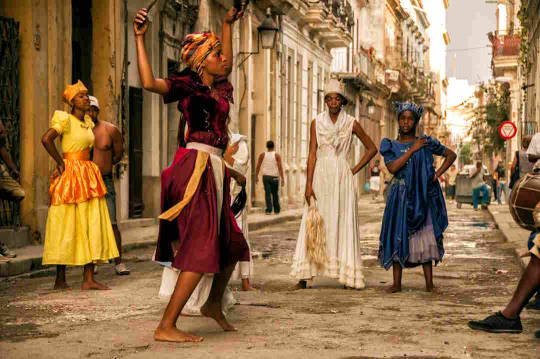
African sacred music in Cuba
All these African cultures had musical traditions, which survive erratically to the present day, not always in detail, but in the general style. The best preserved are the African polytheistic religions, where, in Cuba at least, the instruments, the language, the chants, the dances and their interpretations are quite well preserved. In few or no other American countries are the religious ceremonies conducted in the old language(s) of Africa, as they are at least in Lucumí ceremonies, though of course, back in Africa the language has moved on. What unifies all genuine forms of African music is the unity of polyrhythmic percussion, voice (call-and-response) and dance in well-defined social settings, and the absence of melodic instruments of an Arabic or European kind.
Not until after the Second World War do we find detailed printed descriptions or recordings of African sacred music in Cuba. Inside the cults, music, song, dance and ceremony were (and still are) learnt by heart by means of demonstration, including such ceremonial procedures conducted in an African language. The experiences were private to the initiated, until the work of the ethnologist Fernando Ortíz, who devoted a large part of his life to investigating the influence of African culture in Cuba. The first detailed transcription of percussion, song and chants are to be found in his great works.
There are now many recordings offering a selection of pieces in praise of, or prayers to, the orishas. Much of the ceremonial procedures are still hidden from the eyes of outsiders, though some descriptions in words exist.

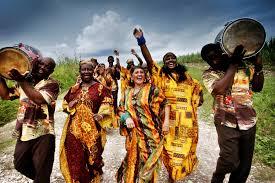
Yoruba and Congolese rituals
Main articles: Yoruba people, Lucumi religion, Kongo people, Palo (religion), and Batá
Religious traditions of African origin have survived in Cuba, and are the basis of ritual music, song and dance quite distinct from the secular music and dance. The religion of Yoruban origin is known as Lucumí or Regla de Ocha; the religion of Congolese origin is known as Palo, as in palos del monte.[11] There are also, in the Oriente region, forms of Haitian ritual together with its own instruments and music.
In Lucumi ceremonies, consecrated batá drums are played at ceremonies, and gourd ensembles called abwe. In the 1950s, a collection of Havana-area batá drummers called Santero helped bring Lucumí styles into mainstream Cuban music, while artists like Mezcla, with the lucumí singer Lázaro Ros, melded the style with other forms, including zouk.
The Congo cabildo uses yuka drums, as well as gallos (a form of song contest), makuta and mani dances. The latter is related to the Brazilian martial dance capoeira
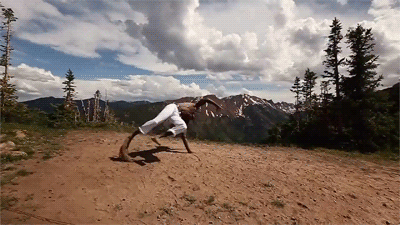
#african#afrakan#kemetic dreams#africans#brownskin#brown skin#afrakans#african culture#fitness#afrakan spirituality#afro cuban music#afro cuban#igbo#yoruba#congo#african music
151 notes
·
View notes
Text

April 4, 2024 - African Pitta (Pitta angolensis)
Found in a spotty range in parts of central and southeastern Africa, these pittas live in rainforests, thickets, swampy areas, and scrub. Some populations migrate within Africa from the southeast to equatorial regions. Foraging on the ground in leaf litter, they eat insects and other invertebrates, including snails, earthworms, and millipedes. They build domed nests with side entrances and sometimes landing platforms from dead leaves, twigs, rootlets, and tendrils in thorny trees. Females lay clutches of one to four, but usually three, eggs.
100 notes
·
View notes
Note
Where do you reside in?
Options:
North America
Central/ South America/ Caribbean
Western Europe
Eastern Europe
North Africa
Sub-Saharan Africa
Northern Asia
Central/ Western/ Southern Asia
Eastern/ Southeastern Asia
Oceania
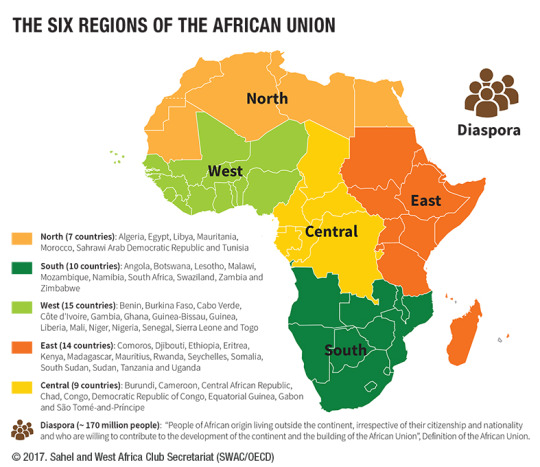
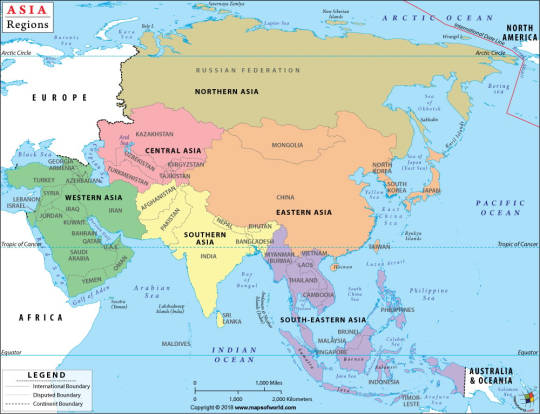
Here is the second part of this poll, with more specific regions of Europe.
And here's a master poll with US states.
Use 🫘/☕️/🌶 and so on, if you'd like to share your answer in the tags.
Tag / comment your country and reblog for a bigger sample size! 🇦🇹 🇧🇼 🇨🇺 🇧🇷 🇫🇰 🇮🇳 🇮🇸
#tumbler polls#tumblr polls#Europe#Asia#Africa#Oceania#America#demographic polls#countries#geography
187 notes
·
View notes
Text
Animal of the Day!
Bushpig (Potamochoerus larvatus)

(Photo from World Land Trust)
Conservation Status- Least Concern
Habitat- Southeastern Africa
Size (Weight/Length)- 90 kg; 120 cm
Diet- Roots; Fruits; Tubers; Insects; Carrion
Cool Facts- Ranging in color from red to black, the bushpig darkens in color as they get older. The oldest males develop a pair of warts on their snout, showing off their strength and longevity as a mate. Bushpigs are highly social and live in small sounders led by a dominant male and female pair. During the breeding season, the boar builds his mate a nest of soft plants for the sow to raise her piglets. The boar helps to raise the piglets and protect them from predators while the sow only provides the milk. Bushpigs are highly aggressive to predators and humans alike. With the largest males growing up to 150 kilograms, bushpigs are capable of running off even leopards and lions.
Rating- 11/10 (Can and will eat domestic pigs.)
#animal of the day#animals#pigs#mammals#sunday#december 17#bushpig#biology#science#conservation#the more you know
102 notes
·
View notes
Text

[ 📹 The broken bodies of Palestinian children are discovered by local civil defense crews searching for survivors from the wreckage of a home bombed by the Israeli occupation army in Gaza City overnight. Three Palestinians were killed in the strike, including a women and her baby. 📈 Current death toll in Gaza now exceeds 36'439 Palestinians killed and another 82'627 wounded. ]
🇮🇱⚔️🇵🇸 🚀🏘️💥🚑 🚨
240 DAYS OF GENOCIDE: MORE THAN 120 DECOMPOSING CORPSES FOUND IN JABALIA, BORDER CROSSINGS REMAIN CLOSED BY "ISRAEL", CHILE JOINS SOUTH AFRICA'S GENOCIDE LAWSUIT IN ICJ, ISRAELI OCCUPATION "WILL NOT EXCEPT" HAMAS RULE IN GAZA, MORE THAN 50'000 HOUSING UNITS DESTROYED IN NORTHERN GAZA, MASS MURDER CONTINUES UNABATED
On 240th day of the Israeli occupation's ongoing special genocide operation in the Gaza Strip, the Israeli occupation forces (IOF) committed a total of 4 new massacres of Palestinian families, resulting in the deaths of no less than 60 Palestinian civilians, mostly women and children, while another 220 others were wounded over the previous 24-hours.
It should be noted that as a result of the constant Israeli bombardment of Gaza's healthcare system, infrastructure, residential and commercial buildings, local paramedic and civil defense crews are unable to recover countless hundreds, even thousands, of victims who remain trapped under the rubble, or who's bodies remain strewn across the streets of Gaza.
This leaves the official death toll vastly undercounted as Gaza's healthcare officials are unable to accurately tally those killed and maimed in this genocide, which must be kept in mind when considering the scale of the mass murder.
"In any process of ending the war, we will not accept the rule of hamas, we will isolate areas, we will remove the members of hamas and bring in other forces that will enable another rule."
Those are the words of Israeli occupation Defense Minister, Yoav Gallant, spoken while visiting the Israeli occupation army's Southern Command on Sunday, illiterating the occupation's position on the removal of the Hamas resistance movement from the Gaza Strip.
This comes despite the consistent failures of the Israeli occupation forces (IOF) on the ground in Gaza, who, despite the violent occupation and obliteration of entire towns and cities in Gaza, repeatedly witness Hamas reestablish its control over areas supposedly cleared of resistance fighters and the Resistance's military infrastructure.
The Minister of Defense went on to comment on the fighting in Gaza and the occupation by the military of the so-called "Philadelphia axis", also known as the Salah-al-din axis, that runs from the southern Mediterranean coast of Gaza, along the border with Egypt, and to the southeastern corner of Gaza on the border with the occupied Palestinian territories.
He told his forces that the "operation in rafah is progressing above and below ground, the forces are fighting with great determination and destroying the oxygen pipeline that connects the gaza strip to egypt, we are strangling hamas and not allowing it to continue to exist - it will not have the ability to overcome, strengthen and arm itself."
"These two operations, on the one hand a military operation and on the other the possibility of a change of government, will lead to the achievement of two of the goals of this war - the overthrow of the hamas government and its military power and the return of the abductees," Gallant added, emphasizing that the Israeli occupation refuses to accept the continued control over Gaza by Hamas.
Even as the Israeli occupation continues stating its intention of continuing its operations until the Hamas resistance movement is destroyed, more than 55% of Palestinians believe the Hamas resistance movement will grow stronger after the war's conclusion.
According to a poll conducted by the Palestinian Research Institute-JMCC, led by Dr. Hassan Al-Khatib, 55% of Palestinians over the age of 18 believe Hamas will grow stronger following an end to the war, while approximately 40% believe the October 7th attacks served the "National-Palestinian interests".
Another 30% of Palestinians believe the Oct. 7th attacks harmed their interests, while 23.5% said it neither helped nor harmed their national interest.
In other news, the Chilean President, Gabriel Buric, announced on Saturday evening, in an address to his country's Congress, that Chile will join South Africa in its lawsuit at the International Court of Justice (ICJ) in The Hague accusing the Israeli occupation of violating the Genocide Conventions.
"I have decided to support Chile and join the lawsuit filed by South Africa before the International Court of Justice, within the framework of the Convention on the Prevention and Punishment of the Crime of Genocide," the Chilean President said.
He went on to describe the "catastrophic humanitarian situation" in Gaza, and called for a "firm response from the international community" before condemning the Israeli occupation's tent massacre last weekend, when the Israeli occupation bombed the tents of displaced families in the city of Rafah, in the southern Gaza Strip, resulting in a conflagration that killed 46 civilians and wounded 250 others.
Meanwhile, the Israeli occupation has continued its ethnic cleansing operations in the Gaza Strip, spending the last 20 days occupying the Jabalia Camp, Beit Hanoun, and parts of Beit Lahiya, during which they destroyed over 50'000 housing units in the northern Gaza Strip, leaving tens of thousands of Gazans without shelter.
That's according to the Municipal Emergency Committee in Northern Gaza, which announced that more than 50'000 units of housing had been destroyed during the brief Israeli occupation, during which, the occupation also bulldozed drainage networks and roads in most municipalities in the north.
Speaking in a press conference held on Sunday, the Committee's Chairman declared the Jabalia Camp a "disaster area", and announced that the Israelis had destroyed 35 water wells, multiple schools and a large number of UNRWA facilities.
He further warned that the threat of imminent famine looms over Gaza's north, and called on the United Nations and other international organizations to urgently intervene to prevent a famine, and to put an end to the Israeli occupation's brutal aggression.
At the same time, local civil defense and ambulance teams said they have now discovered more than 120 decomposing corpses of murdered Palestinians from the Jabalia Refugee Camp, in the northern Gaza Strip.
A correspondant for the Palestinian news agency, WAFA News, spoke with the crews working to recover the bodies of those killed during the 20-day occupation, who said they recovered the bodies of dozens of Palestinians over the last day.
This comes after several days of recovery efforts, during which, the crews recovered 70 decomposing bodies, before recovering 50 more over the previous 24-hours, including the bodies of at least 20 children since Friday.
They said the search continues as dozens of others remain missing among the rubble of homes, schools, shelter centers, UNRWA facilities, and hospitals, none of which were spared from the Israeli occupation's violent bombardment and burning of the Jabalia Camp.
Following the 20-day-long Israeli occupation, the withdrawal of forces revealed otherworldly scenes of incredible destruction, flattened homes, obliterated hospitals, and shattered shelter centers as though armageddon had come to the northern Gaza Strip.
The UNRWA said it received horrific reports from the Jabalia Camp, including deaths and injuries to children who were sheltering in UNRWA schools and facilities, which had been surrounded by Zionist tanks and armored vehicles over the last several weeks.
The organization for Palestinian refugees highlighted the Israeli occupation forces' burning of Palestinian tents for displaced families in its schools and were quoted as saying that "more than 170 UNRWA facilities were destroyed or damaged throughout the Gaza Strip," adding that "our facilities are not a target."
Meanwhile, the conditions across Gaza continue to deteriorate from catastrophic to something much worse, with children dying of hunger in the enclave's hospitals, which continue to operate on fumes as supplies run dry and the Israeli occupation continues to block access to humanitarian aid.
For the 27th day, the Israeli occupation forces (IOF) closed the Rafah and Karm Abu Salem border crossings to humanitarian aid convoys. In that time, the crossings were opened only once for a brief 24-hour period, before the occupation army closed them once again.
According to local reporting, only 200 aid trucks entered Gaza during the brief 24-hour window the crossings were opened, including just 4 fuel trucks, nowhere near enough to keep Gaza's hospitals and emergency services operating for more than a few days.
Hundreds of severely sick and wounded Palestinians also continue to be blocked from leaving the enclave for treatment abroad.
At the same time, the Israeli occupation forces continued their ground operations in Rafah and elsewhere, while also pummeling the Gaza Strip with its bombs, missiles, drones and artillery shells, destroying Palestinian homes and facilities, wrecking the little remaining public infrastructure, and mass slaughtering civilians by the dozen.
In one example, Zionist warplanes bombed a residential apartment belonging to the Al-Nabih family on Shawa Square, in the Al-Daraj neighborhood, east of Gaza City, killing three civilians, including a woman and an infant.
Similarly, another Israeli bombing targeted house belonging to the Khalifa family, adjacent to the Al-Shamaa Mosque, in the Al-Zaytoun neighborhood, southeast of Gaza City, while two Palestinians were killed after occupation fighter jets bombed a displacement center at Imam Ali School on Street 8, south of Gaza City.
Occupation artillery shelling also hammered the area in the vicinity of the University College in the Al-Sabra neighborhood, south of the city, killing and wounding a number of civilians, while occupation artillery shelling continues hammering the Al-Zaytoun neighborhood.
Israeli ground operations also continued in the city of Rafah, in the southern Gaza Strip, with occupation raids targeting the Brazil neighborhood, south of the city, wounding several Palestinians and demolishing several homes, while the occupation's soldiers continue to fire smoke bombs, flash-bang grenades, and shell the western neighborhoods of the city.
Zionist forces similarly destroyed a number of residential homes in the Tal al-Sultan neighborhood, west of Rafah, with witnesses describing dead bodies lying in the streets, while paramedic and civil defense crews were unable to reach them due to the continued Israeli shelling of the neighborhood.
Another occupation airstrike targeted lands in the town of Al-Qarara, north of the Khan Yunis Governate, south of Gaza, while Zionist gunboats fired bullets and artillery shells towards the coast opposite the Al-Mawasi area, where displaced civilians were told to evacuate to after the start of ground operations in Rafah.
In the central Gaza Strip, the Israeli occupation army detonated a number of residential homes and apartment buildings in the Al-Mughraqa area, north of the Nuseirat Camp, while Zionist warplanes bombed a house in the Bureij Refugee Camp.
Local paramedic crews also managed to recover the bodies of several murdered civilians in the city of Al-Zahra'a, north of the Nuseirat Camp, while the body of a female martyr was recovered from the rubble of a neighborhood east of Deir al-Balah.
As a result of the Israeli occupation's ongoing special genocide operation in the Gaza Strip, the death toll among the local population has risen to exceed 36'439 Palestinians killed, including more than 15'000 children and over 10'000 women, while another 82'627 others have been wounded since the start of the current round of Zionist aggression, beginning with the events of October 7th, 2023.
June 2nd, 2024
#source1
#source2
#source3
#source4
#source5
#source6
#source7
#source8
#source9
#videosource
#graphicsource
@WorkerSolidarityNews
#gaza#gaza news#gaza war#war in gaza#gaza genocide#genocide in gaza#genocide#israeli occupation#israeli war crimes#war crimes#crimes against humanity#israel#palestine#palestine news#palestinians#free palestine#gaza conflict#israel palestine conflict#middle east#politics#news#geopolitics#world news#global news#international news#war#breaking news#current events#israeli terrorism#free gaza
31 notes
·
View notes
Text

Impala (Aepyceros melampus)
Also known as the roibok, these lithe antelope are found in woodlands and savannas across southeastern Africa. They eat a variety of vegetation, as well as fruit. Impalas have impressive leaping abilities- they can leap up to 9.8 feet (3m) into the air and across distances of 33 feet (10m). They also have a unique tooth arrangement which they use to groom each other, an important part of social bonding.
#markhors-menagerie#animal facts#animals#biology#fun facts#ungulates#even toed ungulates#ruminants#bovidae#antelope#impala#roibok
28 notes
·
View notes
Text
A History of Vampires
Vampy vampy vampires! I’m not talking about Twilight; today I want to make a post talking about the real cultural significance of vampires in different folk beliefs around the world.

What Is A Vampire?
“...a mythical creature that subsists by feeding on the vital essence (generally in the form of blood) of the living.”
- Good ol’ Wikipedia
When we think of vampires, we picture Dracula in his brooding cloak sucking the life out of others. We see those characteristic fangs, an aversion to garlic, and a fatal vulnerability to sunlight.
Vampiric creatures have been noted in cultures around the world for generations.
A History of “Vampires” (Popularized in the West)
Cultures such as the Mesopotamians, Ancient Greeks, and Manipuri have folk tales of entities that are now considered to be precursors to modern-day vampires. Despite such occurrences of vampiric creatures in these ancient civilizations, the folklore for what most consider vampires today comes almost exclusively from early 18-thcentury Southeastern Europe.
The term “vampire” itself was popularized in Western Europe after reports of mass hysteria during the 18th-century. Said hysteria originated from a pre-existing folk belief in Southeastern and Eastern Europe that in some cases ended in corpses being staked, and some people were even persecuted under the accusation of vampirism.

Early folk beliefs in vampires has typically been summed up to pre-existing ignorance of how the body would decompose after death, with people attempting to explain such decay through the existence of vampires.
The more personable and charismatic version of the vampire, born in fiction, came in 1819 with the publication of The Vampyre by John Polidori. Bram Stoker’s novel Dracula in 1897 would later on provide the basis of the modern vampire legend and be remembered as the most significant vampire novel in literature. However, it is worth noting that Stoker’s novel came after the publication of the 1872 novel Carmilla, published by Irish author Sheridan Le Fanu.
Folk Beliefs
In Slavic and Chinese folk traditions, any corpse that was jumped over by an animal (especially a dog or cat) was feared to become a “vampire”. There was also believed to be a risk with a body having any wound that wasn’t treated with boiling water.
In Russian folklore, vampires were said to have been witches or people who had rebelled against the Russian Orthodox Church while alive.
Within Jewish traditions, “alukah” is synonymous with vampires. The creature is said to be a living human being, but can change into a wolf. It also has the ability to fly by releasing its long hair, and would eventually die if not allowed to feed on blood for an extended amount of time. Once dead, a vampire could be prevented from becoming a demon by being buried with its mouth stuffed with soil.

Albanian mythology discusses both the “shtriga” and the “dhampir”. Shtriga is a vampiric witch that sucks blood from infants while they sleep at night, then turning into a flying insect. Only a shtriga could cure those she drained blood from. A cross made of pig bone could be placed at the entrance of a church on Easter Sunday, which would render any shtriga inside unable to leave. Then, they could be captured and killed.
The Ashanti people in West Africa have folk tales of the iron-toothed and tree-dwelling “asanbosam” which can take the form of a firefly and hunts for children for their blood.
The Betsileo people of Madagascar have stories of “ramanga”, a vampire who drinks the blood and eats the nail clippings of nobles.
The Mapuche of southern Chile have stories of a bloodsucking snake known as “Peuchen”, with aloe vera being hung backwards behind or near a door to ward off vampiric entities across a variety of South American superstition.
Aztec mythology has folk tales of the Cihuateteo, which are skeletal-faced spirits of humans who died in childbirth. These entities were said to steal children, and entered into sexual liaisons with the living, which would drive them to insanity.
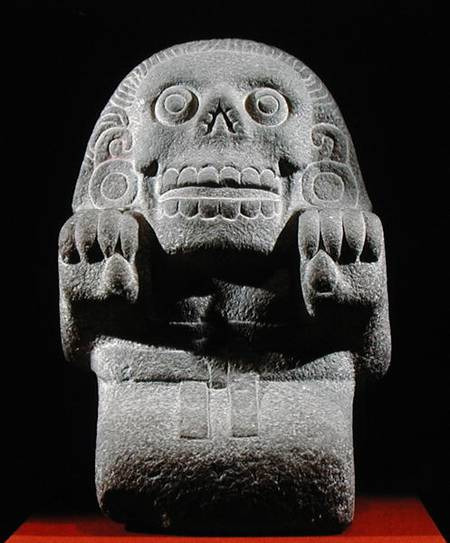
146 notes
·
View notes